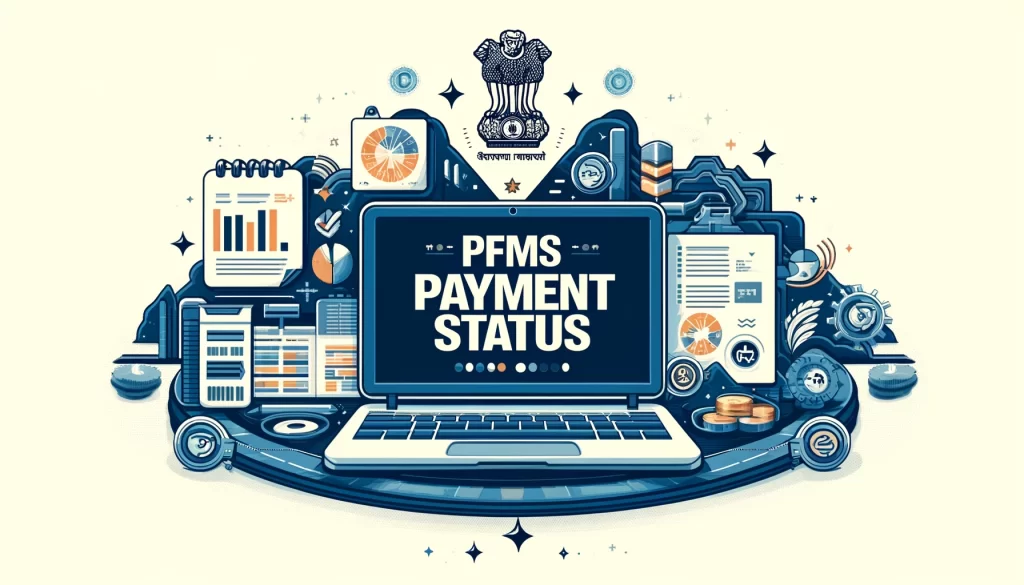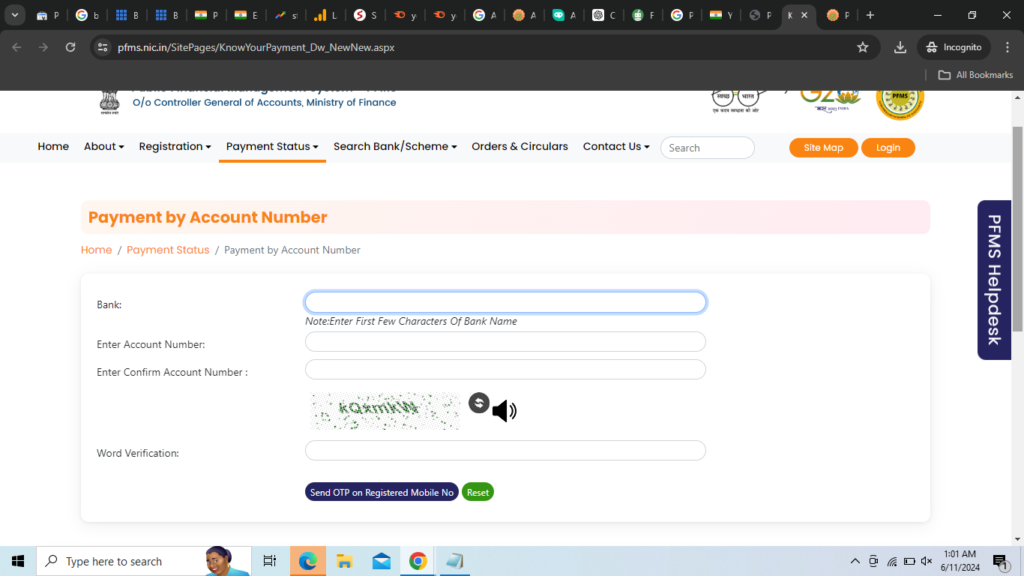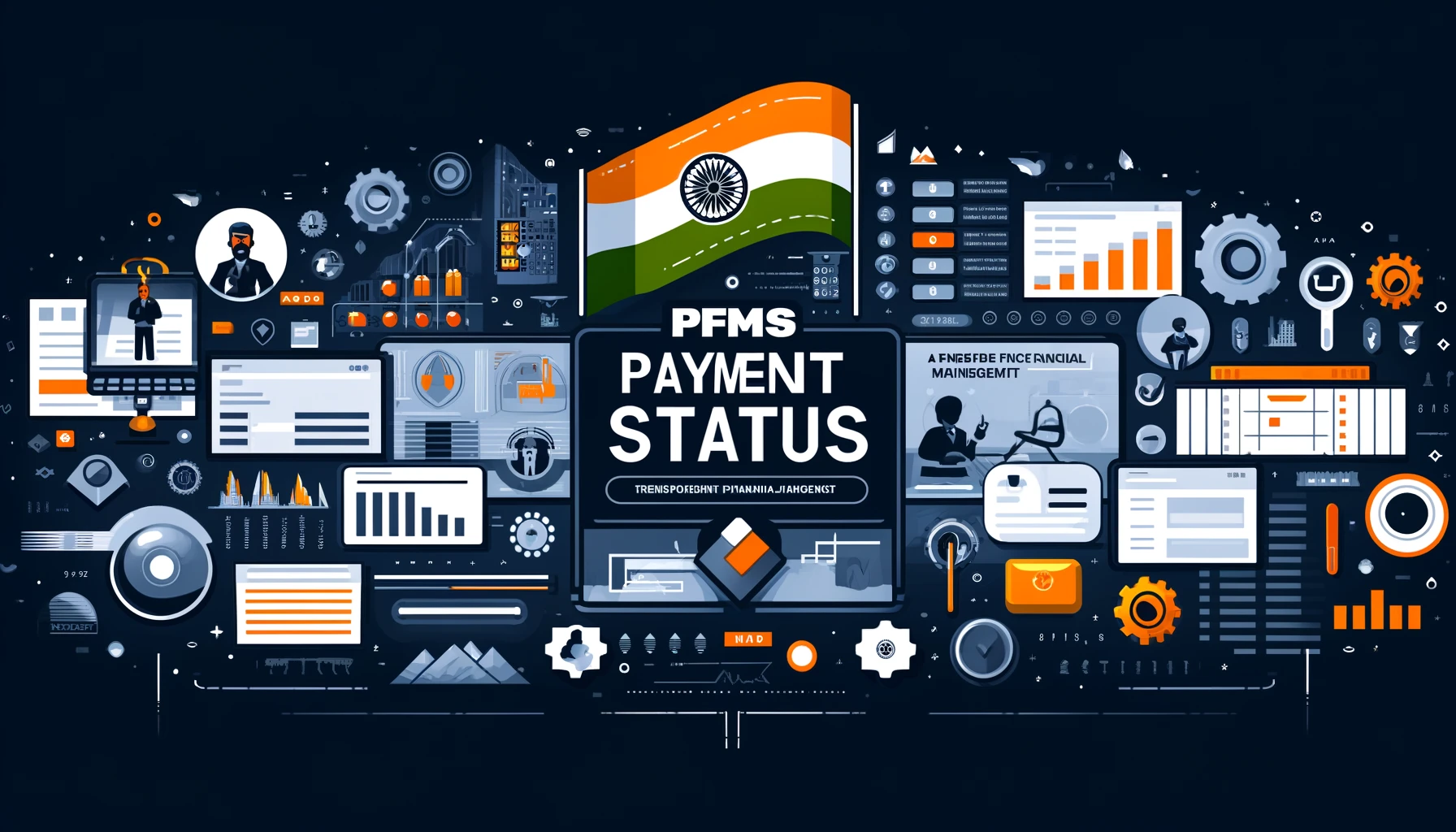In 2024, if you want to check your PFMS (Public Financial Management System) payment status, you can easily do it by using the PFMS mail ID (mail to PFMS) and your official website, which is pfms.nic.in. Through this system, one can check the status of payments like scholarships, subsidies, or any other government disbursements by using his bank account number and Aadhaar number as a basis. In this post you can learn more about PFMS Payment Status.
It is a web-based system for offering financial information to payments in a transparent and easy-to-access format to the beneficiaries on a near-real-time basis. Users can provide the required credentials and cross-check the status of their payments on the PFMS portal, which also eases financial planning and management.
About PFMS

| Attribute | Details |
|---|---|
| Full Name | Public Financial Management System |
| Developed by | Office of Controller General of Accounts (CGA), Ministry of Finance, Government of India |
| Initial Launch | Started as a pilot project named CPSMS in 2008-09 |
| Purpose | To manage and track the funds of the Government, ensure transparency in fund disbursement |
| Functionality | Processes payments, tracks, monitors, accounts, reconciles, and reports financial transactions |
| Integration | Integrated with the core banking system for real-time processing and information on fund flow |
| Key Features | Real-time fund tracking, direct benefit transfers, financial reconciliation |
| Benefits | Enhances financial transparency, improves public financial management, ensures efficient fund utilization |
| Primary Use | Handling government disbursements such as subsidies, scholarships, and other payments |
| Website | pfms.nic.in |
The Office of Controller General of Accounts (CGA) developed and implemented the Public Financial Management System (PFMS), a web-based online software application, on behalf of the Ministry of Finance, Government of India. PFMS provides an end-to-end solution for processing payments, beginning from initiation, processing, and authorization (maker-checker) to final approval and disbursement of funds, tracking and monitoring payments on an overall basis or even in real-time, updating status, accounting, reconciliation, and reporting. It is the only one that is directly connected to the core banking system of the country for real-time fund disbursement and utilization.
Launched initially as a pilot project named CPSMS (Central Plan Schemes Monitoring System) in November, 2008 for the Plan schemes of the ministries of Rural Development, Health & Family Welfare, Drinking Water & Sanitation, and Human Resource Development, CPSMS brought integrating State Budgeting systems with the Central system by online transfer of funds is an mandatory requirement. It is essentially designed to promote transparency, good financial management and the effective release of government funds. The system is also central to the direct benefit transfer (DBT) initiative where welfare payments are made through bank accounts, ensuring that subsidies reach the targeted beneficiaries without intermediaries and improving the efficiency of delivery of government services.
Also Check – Rythu Bharosa Payment Status 2024 Check Online at ysrrythubharosa.ap.gov.in by Aadhaar Card
Significance and purpose of PFMS
One of the most important components of policy governance in India is the Public Financial Management System (PFMS), which is a unified system transferring payments from the CGA to the beneficiaries.
Significance of PFMS:
Transparency measures Over the years, many transparency measures have been suggested to track government spending, such as the Open Budget, and to be able to observe, to a great extent, where and when public money goes.
PFMS is important to maintain transparency in the Ministry of Finance. Track transactions as they happen: Every single transaction is tracked instantly to provide transparency on how funds are used, discouraging misuse and corruption.
Fund management efficiency:
This is integrated with India’s core banking system, so whenever you process the funds, they will be debited and credited, and it will show you the same timeline (real-time). This in turn would speed up the fund devolving to the beneficiaries due to the efficiency caused by fund management.
Accountability:
PFMS offers very detailed track trails, etc., and helps to hold government AP and AR transactions accountable based on this account. This accountability is essential for good governance and ensuring public confidence.
Direct Benefit Transfer Support (DBT):
Importance of PFMS to Implement DBT PFMS is the backbone for implementing Direct Benefit Transfer (DBT) in India, as this platform ensures that government subsidies and benefits reach the right beneficiaries without any intermediaries, which helps in reducing leakage and fraud.
The PFMS’s Purpose:
Better financial management:
Objectives for PFMS are to streamline the accounting process, facilitate easier reporting of expenditures, ensure effective cash management, allow easier monitoring of all accounts and spending, and bring a people-friendly and transparent accounting system leading to the management of public funds for well-targeted subsidies and better subsidy design for green and blue fisheries benefits.
Ease up on Financial Inclusion:
With PFMS using Direct Benefit Transfer (DBT), the process of transferring funds is made easier as funds are disbursed directly to beneficiaries bank accounts. This further enhances financial inclusion, especially for the underserved and marginalized sections of society.
Data-Driven Decision Making:
The system generates financial data, which leads to more informed policy decision-making. This data-driven technique facilitates the formulation of targeted financial policies.
Improved public service delivery
PFMS strengthens the delivery mechanism for public services, provides maximum transparency in grant releases, and ensures timely and accurate payments for various government schemes and services.
In general, the Public Finance Management System has the goal of promoting transparent, effective, and responsible management of government resources, improving efficiency and effectiveness in fiscal management, and cooperating with the economic and social development policies of the government.
Eligibility criteria for accessing PFMS Payment Status
| Criteria | Description |
|---|---|
| Registered Beneficiary | Individuals must be registered beneficiaries of any government scheme managed through PFMS. |
| Valid Credentials | Beneficiaries need valid login credentials, including a user ID and password, provided by PFMS or the government. |
| Linked Bank Account | The beneficiary’s bank account must be linked to PFMS for receiving direct benefit transfers. |
| Aadhaar Verification | Aadhaar number should be linked to the beneficiary’s PFMS profile and bank account for identity verification. |
| Active Status | The beneficiary’s account and status in PFMS must be active and free from any restrictions or flags. |
| Compliance with Terms of Use | Users must adhere to the terms of use stipulated by PFMS, which includes proper handling of personal data. |
This table ensures that potential users can easily understand the necessary conditions to access their PFMS payment status, maintaining both security and functionality.
Required Document
| Document Type | Purpose |
|---|---|
| Aadhaar Card | Used for identity verification and linking with the PFMS profile and bank account. |
| Bank Account Details | Necessary for linking the PFMS profile for direct benefit transfers, includes account number and IFSC code. |
| Mobile Number | Registered mobile number is required for receiving OTPs and security verifications during login. |
| Official Identification | Additional ID such as PAN card or driver’s license for further verification processes. |
| Registration Confirmation | Document or receipt confirming registration under the applicable government scheme managed through PFMS. |
| Email Address | An active email address for receiving notifications, updates, and account recovery information. |
Check PFMS Payment Status 2024 Check Online at pfms.nic.in
To check your PFMS payment status online for the year 2024, follow these steps:
- Open your web browser and navigate to the official PFMS website: pfms.nic.in.

- Locate and click on the ‘Know Your Payment’ link on the homepage, which is typically found under a relevant section such as ‘Services’.
- Enter your bank account number in the provided field. Ensure you enter the number correctly to avoid errors.
- Next, input your Aadhaar number as an additional step for identity verification.
- Click on the ‘Search’ button to proceed. The system may also ask you to enter a captcha code for security purposes.
- The payment status related to the bank account and Aadhaar number you provided will be displayed on the screen. This will include details such as the transaction amount, date of transaction, and the status (processed, pending, or failed).
- Review the displayed information for accuracy and completeness.
Make sure to have your bank account details and Aadhaar number handy before starting the process to ensure a smooth and quick check.
PFMS Contact Details
For inquiries and support related to the Public Financial Management System (PFMS), you can contact the helpdesk using the following details:
- PFMS Helpdesk Email: You can send an email to the PFMS support team for any queries or assistance. The common email addresses used are:
- For Scholarship queries: [email protected]
- General queries: [email protected]
- PFMS Helpdesk Phone Number: For direct assistance, you can call the PFMS helpdesk. Common numbers include:
- Toll-free: 1800 118 111
- Direct line: 011-23343860
- Office Address:
- Controller General of Accounts,
- Ministry of Finance,
- Department of Expenditure,
- Mahalekha Niyantrak Bhawan,
- GPO Complex, INA, New Delhi – 110023
Also Check – MGNREGS Payment Status Check Online 2024 at mgnregs.ap.gov.in by Unique Transaction and Bank Reference Number
Conclusion
The process for PFMS (Public Financial Management System) payment status check is a much-needed facility for the beneficiaries to be informed about their transactions and also to make the entire scheme look more transparent, which decreases corruption in the disbursement of government funds.

Vikas Gupta is an insightful content creator and financial analyst, educated in economics and public administration. At yojanastatuschecktoday.in, he specializes in simplifying complex government schemes, aiming to empower readers with vital information. His expertise helps citizens navigate and utilize government initiatives effectively, ensuring access to essential updates and developments.
